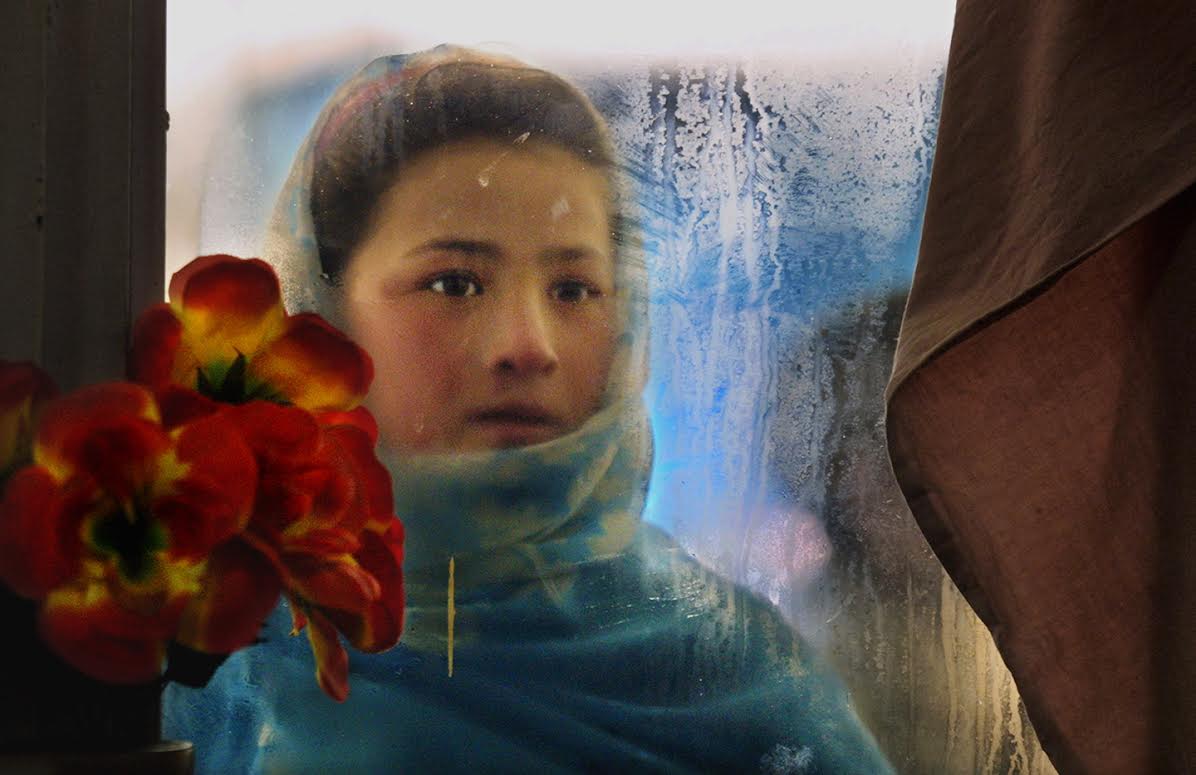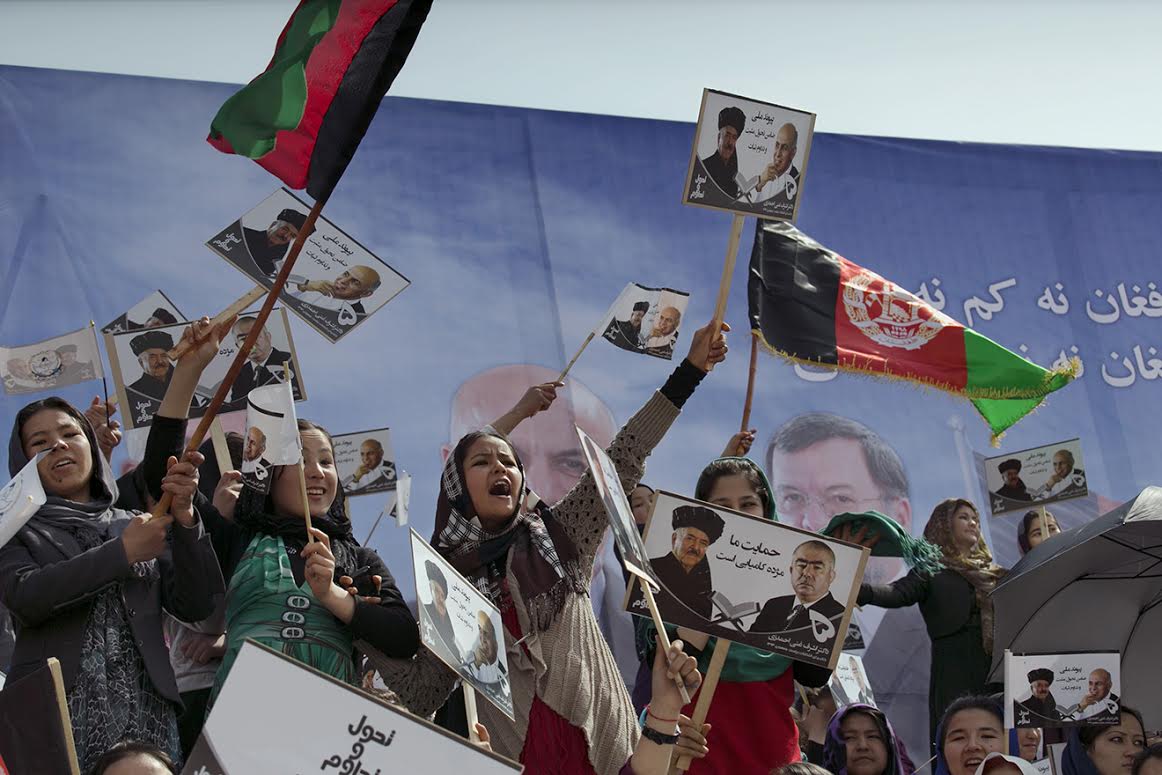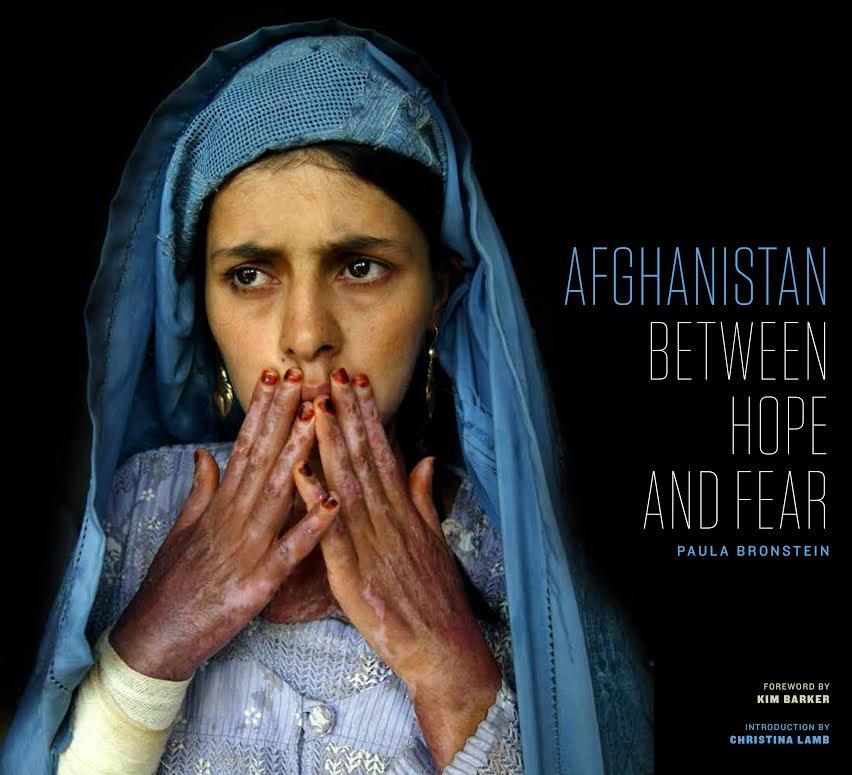blog
Book Review: Afghanistan Between Hope and Fear by Paula Bronstein

A girl looks through the frosted window of a restaurant, hoping to get leftovers. She begs after school to help out her family. (Kabul, January 13, 2002)
I’ve often wondered whether photographs from conflict zones really make a difference. There are of course the ones that have become icons such as Nick Ut’s photo of Kim Phuc – and been attributed a significance that back then they probably did not have. Well, who knows? What we do however know is that the military is afraid of pictures (and that means: feelings, emotions, sensations) for they cannot control them.
I haven’t been to Afghanistan and never had any desire to go there. I’m still not sure whether I would like to visit the place despite the fact that the images I now carry around in my head fill me with warm feelings for the Afghans portrayed. Paula Bronstein’s photographs convey the impression that she is fond of, and touched by, the people she decided to photograph.
Photographs are meant to direct people’s eyes. Paula Bornstein shows us what she wanted us not only to see but to look at. We need to confront the reality in Afghanistan not only because the policy makers in the West are partly responsible for contributing to, and being a part of, it but because what is happening there is a human made tragedy. What human beings have decided to begin, they can also decide to stop.

Burqa-clad women wait to vote after a polling station runs out of ballots. (Kabul, April 5, 2014)
The reality in Afghanistan is however not just the one we occasionally hear about in the news. It is also a unique rugged landscape, it is also about people going about their daily lives – we get to see a man playing cricket as the sun sets on a dusty field, an electrician cutting old power lines, a girl watching her mother read from the Qur’an after Friday prayers at a local mosque, a policeman taking a break atop an abandoned vehicle.
Beautiful is the word that first came to mind when I was spending time with these photographs. And, almost immediately, my inner censor voice made itself heard: Can photographs that depict atrocities and suffering be beautiful? Of course they can. But is it really a good idea to make aesthetic photos of burn victims and heroin addicts and present them in a impressively done tome? Yes, yes, yes!
I’m saying this because of what I’ve experienced with Paul Bronstein’s Afghanistan photographs: I felt deeply moved and touched, I couldn’t take my eyes off them. They made me curious, I wanted to know the stories behind the people portrayed. And, I was glad the information accompanying the pics was succinct and useful.

Young women cheer as they attend a rally for the Afghan presidential candidate Ashraf Ghani. (Kabul, April 1, 2014)
The foreword by Kim Barker, the former South Asia bureau chief for the Chicago Tribune, highlights that Bronstein “made the country a mission, returning frequently over the years and choosing to spend most of her time with Afghans rather than on embeds with international troops.” The introduction by Christina Lamb, the award-winning British journalist who has been travelling to Afghansitan since 1987, devotes her attention to the plight of Afghan women and points out that the “photographs in this book vividly illustrate, there are two very different sides to the lives of women in Afghanistan.” She quotes Hassina Safi, excutive director of the Afghan Women’s Newtwork: “On one side we’re seeing promotion of women to key positions as a result of our advocacy over the last years, but at the same time there is no security for women, and we’re seeing the systematic killing of women working outside.”
Given that, as Paula Bronstein writes in her afterword, “working in Afghanistan as a female photographer has its unique difficulties, including cultural and religious taboos,” this book is not only remarkable but truly impressive and extraordinary. Paula Bronstein makes one understand because she makes one feel. She created a deeply moving testimony of life.
The images shown here are excerpted from the book Afghanistan: Between Hope and Fear, photographs by Paula Bronstein, with a foreword by Kim Barker and an introduction by Christina Lamb (University of Texas Press, August 2016)

Afghanistan Between Hope and Fear
By Paula Bronstein
University of Texas Press, Austin 2016
For more information or to purchase the book: utpress.utexas.edu/index.php/books/bronstein-afghanistan, www.paulaphoto.com
Location: Online Type: Book Review
Events by Location
Post Categories
Tags
- Abstract
- Alternative process
- Architecture
- Archives
- Artist residency
- Artist Talk
- Biennial
- Black and White
- Book Fair
- Car culture
- Charity
- Childhood
- Children
- Cities
- Collaboration
- Community
- Cyanotype
- Documentary
- Environment
- Event
- Exhibition
- Faith
- Family
- Fashion
- Festival
- Film Review
- Food
- Friendship
- FStop20th
- Gender
- Gun Culture
- Habitat
- home
- journal
- Landscapes
- Lecture
- Love
- Masculinity
- Mental Health
- Migration
- Museums
- Music
- Nature
- Night
- nuclear
- Photomontage
- Plants
- Podcast
- Portraits
- Prairies
- Religion
- River
- Still Life
- Street Photography
- Tourism
- UFO
- Water
- Zine

Leave a Reply